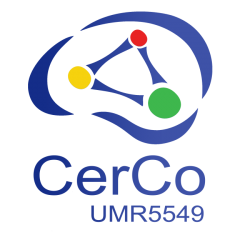Modelling makes it possible to better understand a mechanism by trying to reproduce it using mathematical and computer tools. This can and should be done by neglecting certain details that are not essential for the mechanism under study. Modelling occurs in all fields of science, and neuroscience is no exception (we speak of “computational neuroscience”).
At CerCo, we model brain activity and computation at several levels: individual neurons and spikes, on the one hand, using pulse neural networks (see figure below). This helps to understand how the algorithms needed for cognitive functions are implemented on neural hardware. Other models focus on a more aggregated level: neural populations, such as those recorded with fMRI. This results in models that can represent objects and classify them in a similar way to humans, even if the implementations may differ. Finally, it should be noted that these models that mimic the brain can have very promising applications for artificial intelligence.
An example of a pulse neural network that explains the development of binocular vision and the emergence of selectivity to disparity http://dx.doi.org/10.1523/JNEUROSCI.1259-18.2018
